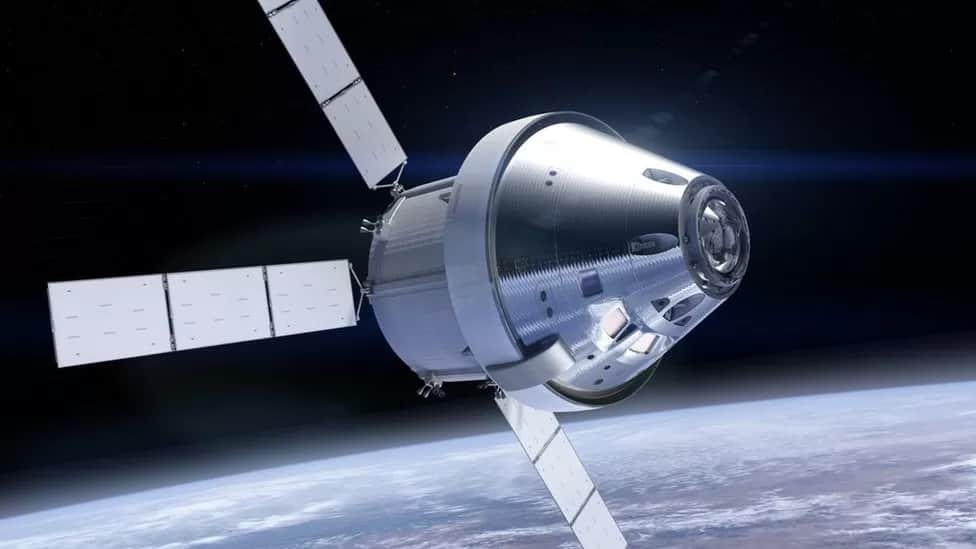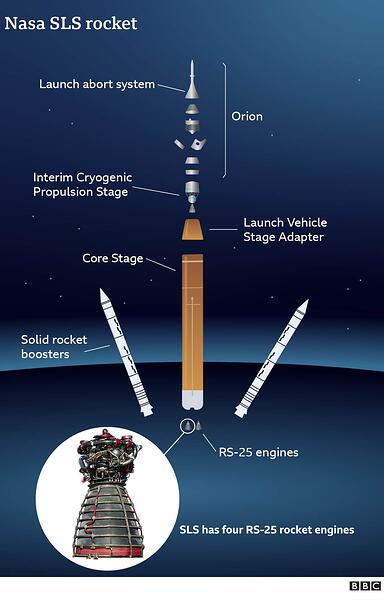NASA has completed rolling the entire launch system complete with the
Rocket itself and boosters out to the launch pad !!
They hope to launch later this month ??
The Rocket will be unmanned this time but further launches are to be expected!!
Exciting times, should take your minds off of other issues ?? 



I would have thought they had more important things on which to waste spend their money.
Hi
Not a waste of money at all  .
.
Wot no gromit.
@SilverTabby , Not at all ST, half the price of Boris’s track and trace and its
over nearly 20 yrs too !!


I will be watching this with great interest.
Yes, I’m very much looking forward to this.
I’m wondering what visual footage will be available given the advances in technology since the Apollo missions.
I always found the re-entry stage particularly dramatic, I can only imagine the Apollo crews did too, chunks of burning phenolic epoxy resin whizzing past their window…phew!
LOL - we’ll have to agree to disagree on this one then! ![]()
![]()
When astronauts return to the Moon this decade - under a Nasa plan called Artemis - they’ll travel there in Orion.
Orion is a vehicle for the future, with something distinctly retro about it. The conical shape of the capsule recalls the Apollo modules that visited the Moon half a century ago.
That’s no surprise - the physics of returning to Earth from space haven’t changed. A teardrop-shaped object is stable when travelling through our atmosphere at supersonic speeds.
But Orion is packed with technology that couldn’t have been imagined when Neil and Buzz landed on the Sea of Tranquility in July 1969.
These advanced capabilities are essential for travelling in deep space, where astronauts face different challenges to those encountered closer to Earth, such as on the International Space Station (ISS).
The SLS is the modern equivalent of the Saturn V, the huge launcher built during the Apollo era. Like the Saturn, it is split into segments, or stages, stacked on top of each other. But the rocket also incorporates technology from the space shuttle.
- The rocket will stand 98m (322ft) tall in its initial, or Block 1, configuration
- The Block 1 SLS can send more than 27 tonnes (59,500 pounds) to lunar orbits - the equivalent of 11 large sports utility vehicles (SUVs)
- A future version of the SLS, called Block 2 Cargo, will launch 46 tonnes (101,400 pounds) to the Moon. That’s 18 large SUVs.
- The SLS will produce 8.8 million pounds (39.1 Meganewtons) of thrust in its Block 1 configuration
- Four RS-25 engines sit at the base of the core stage; they’re the same ones used in the space shuttle

@Omah , l was designing these at 13yrs old Omah, l won 5 quid off
the headmaster ( Mr Stacey) for writing a book about how we would go
to the moon one day. !!
I must say they have copied me almost rxactly!! 


It’s a pity that you couldn’t have written about a way of getting into space without having to burn/use so much fuel.
@Dextrous63 , Unfortunately the laws of physics dont allow it at ,the
moment,( We are still using 1940s technology!)
Maybe when we discover antigrav ?? 



Wonder what happened to the idea of using vacuum tube’d electromagnetically accelerated pods to get us to escape velocity.
But surely greater efficiency? After all, isn’t this partly why some companies are already looking at trains within tubes, and/or electromagnetically suspended carriages. Surely they must think that it’ll enable greater travel speeds to be reached at a lower cost??
Efficiency would only come in the advent of superconductivity. There is a difference between magnetic levitation for trains on the ground than trying to accelerate a body to 18,000mph to overcome gravity to an altitude of around 1,200 miles to achieve low Earth orbit.



